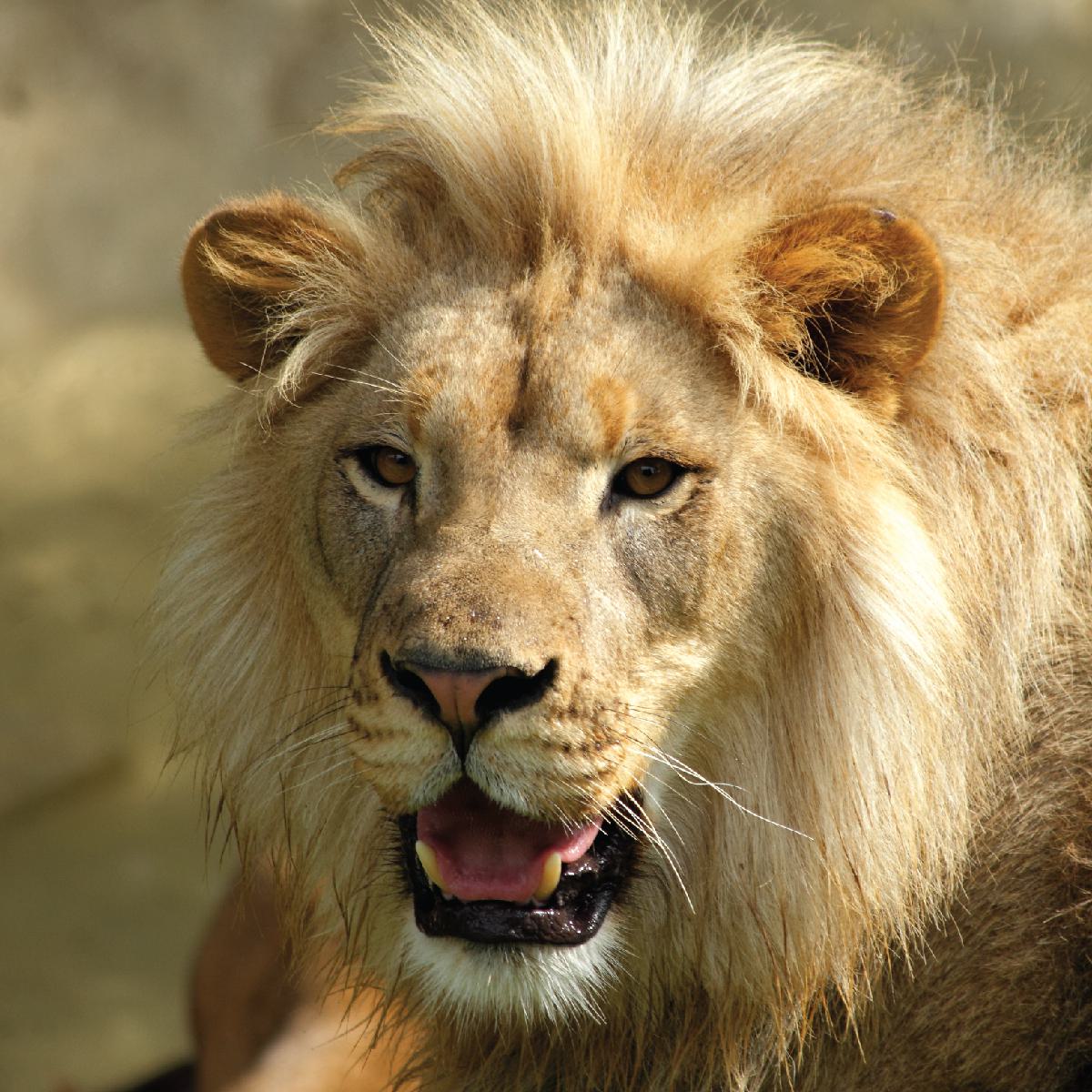
African Lion
Panthera leo
Did you know?
- African lions are part of the Felidae family, which they share with other big cats.
- They live in a variety of habitats from southern Sahara to southern Africa.
- Their roars can be heard from three miles away.
- They are at the top of the food chain in the ecosystems in which they live.
- Each lion has a whisker pattern that is unique.
Social Structure
African lions are the only social big cats. They live in prides that can have up to 20 members. Prides are usually led by one dominant male and consist of multiple females and offspring. Prides do not typically migrate but will move to find better food and water sources within their range if necessary. Lions have a variety of vocalizations and physical interactions, such as head rubbing and grooming, that maintain pride bonds.
Hunting Techniques
African lions spend most of the day resting and typically hunt during dusk, evening, or early morning hours when it is cool and dark. Lions have great night vision, which helps them spot prey. Though lions are great hunters, they have relatively small hearts and lungs, prohibiting them from chasing prey long distances. Adult females do most of the hunting, while the dominant male spends more time patrolling and defending territory from other adult males.
Threat Level
- Unknown
- Common
- Near Threatened
- Threatened
- Endangered
- Critically Endangered
- Extinct in the Wild
Threatened
The African Lion faces a high risk of extinction in the wild.
Range
Southern Sahara to southern Africa (except Congo rain forest belt)
Habitat
Woodlands, grasslands, deserts

We care about african lions
African lions are disappearing from some of their traditional habitats because of human activity and the decline of prey species. The Saint Louis Zoo participates in the Association of Zoos and Aquariums Species Survival Plan for African lions. This is a cooperative breeding program, with a number of zoos working together to ensure the survival of the species.
Find this animal in Red Rocks

SAINT LOUIS ZOO ZONE
Red Rocks
At Red Rocks, you’ll view some of the world’s most powerful predators living near some of the world’s most graceful prey. Lions, tigers, zebra and giraffes all share the natural rocky boulders and outcroppings as their territory. With shading trees and a bird or two among the mammals, Red Rocks is a great place to spend a day at the Saint Louis Zoo.

